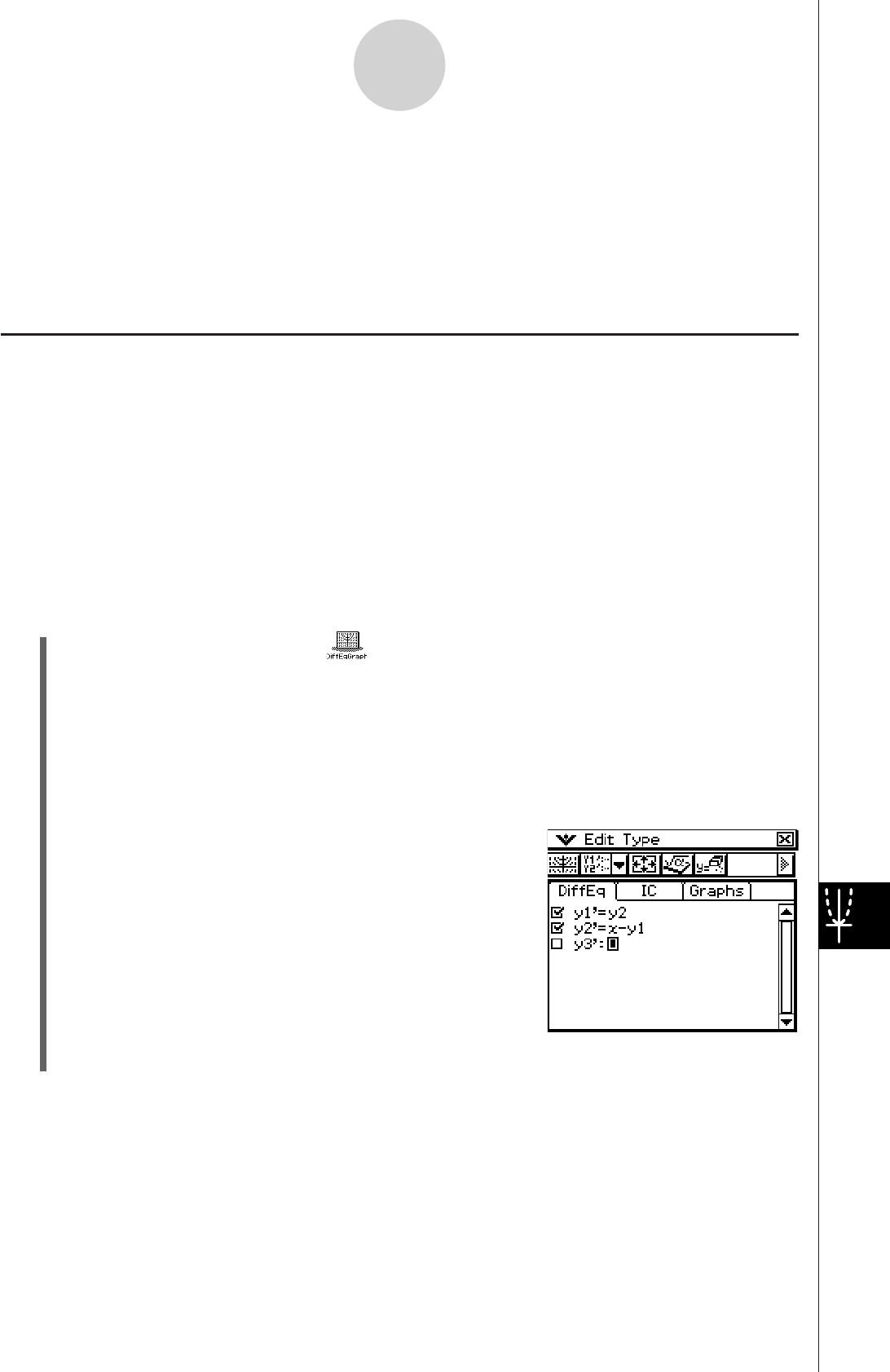
20060301
14-4-1
Graphing an Nth-order Differential Equation
14-4 Graphing an Nth-order Differential Equation
This section explains how to graph the solution curve(s) for an nth order (higher order)
differential equation based on specified initial conditions.
With this application, an nth order differential equation is input in the form of a set of multiple
first order differential equations.
Inputting an Nth-order Differential Equation and Initial Conditions, and
then Graphing the Solutions
You can use the procedure in this section to graph the solution curves of the Nth-order
differential equation input on the [DiffEq] tab for given initial conditions.
Note
• For Nth-order differential equations, only solution curves are drawn.
Example: To specify the three initial conditions (
xi
,
y
1
i
,
y
2
i
) = (0, −1, 0), (0, 0, 0), (0, 1, 0) for
the differential equation
y
’’ =
x
−
y
and graph its solution curves
S
ClassPad Operation
(1) On the application menu, tap .
• This starts up the Differential Equation Graph application and activates the differential
equation editor ([DiffEq] tab).
(2) Tap [Type] - [Nth (No Field)] or the
toolbar button.
(3) Use the differential equation editor to input
y
’’ =
x
−
y
.
• Input
y
’’ =
x
−
y
by dividing it into two first order differential equations. If we let
y
1 =
y
and
y
2 =
y
’, we see that
y
1’ =
y
’
=
y
2 and
y
2’ =
y
’’ =
x
−
y
1.
8
A
U
7
8
@
U
(4) Tap the [IC] tab to display the initial condition editor.


















